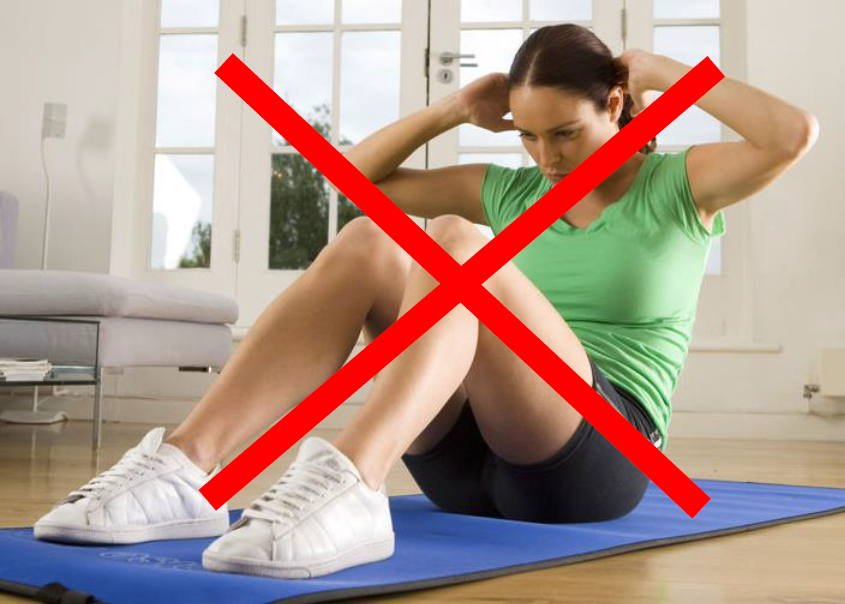Core Training for Runners: Stability vs. Flexion-Based Exercises
When we look more closely at how the spine functions while running, it becomes clear that stability is a more relevant characteristic than strength. The spine does go through a small degree of rotation, but you are never flexing, extending, or rotating through an extended range of motion. Or, atleast I hope you aren’t!
So why would you only train the core with crunches and sit-ups if you never use those movements while running, while neglecting the stability component altogether?
Core stability is very important when resisting unwanted joint positions and maintaining proper alignment. During running the spine should remain upright, rigid, and resisting external forces so the lower body can move efficiently. Like I mentioned, there is a degree of rotation that happens which acts as a counterbalance to the lower body. But, for the most part, stability and proper positioning of the spine are far more important than solely possessing a strong core.
My goal with this video blog is to educate and hopefully build awareness around proper core training for runners. Don’t get me wrong, crunches, sit-ups, and other core exercises can still be used with this approach. However, if you are looking to train the core in an effective way that carries over to better performance and longevity in the sport of running, there needs to be an emphasis on stability of the spine.
In the following video, I want to walk you through (3) of the best core stability exercises for runners which includes…
Dead Bug
Bent Legs Lowering
Front Plank
Note: It's important to pay close attention to the position of your pelvis and spine. Maintaining a neutral spine is important to reinforce throughout the duration of the exercise. Once this position is lost, re-set, and go back into your repetitions or hold.
Now it's up to you! Use this article and video as a guide to see where your current core training program is lacking. If it consists solely of core strengthening and no stability, I highly recommend adding some of the exercises I outline in the video. Obviously this is a very basic starting point to see better results that carryover to running, so please let me know if I can help you by designing a more individualized program to achieve your running goals.
Please comment and leave feedback below on your thoughts from the article or core training in general.


